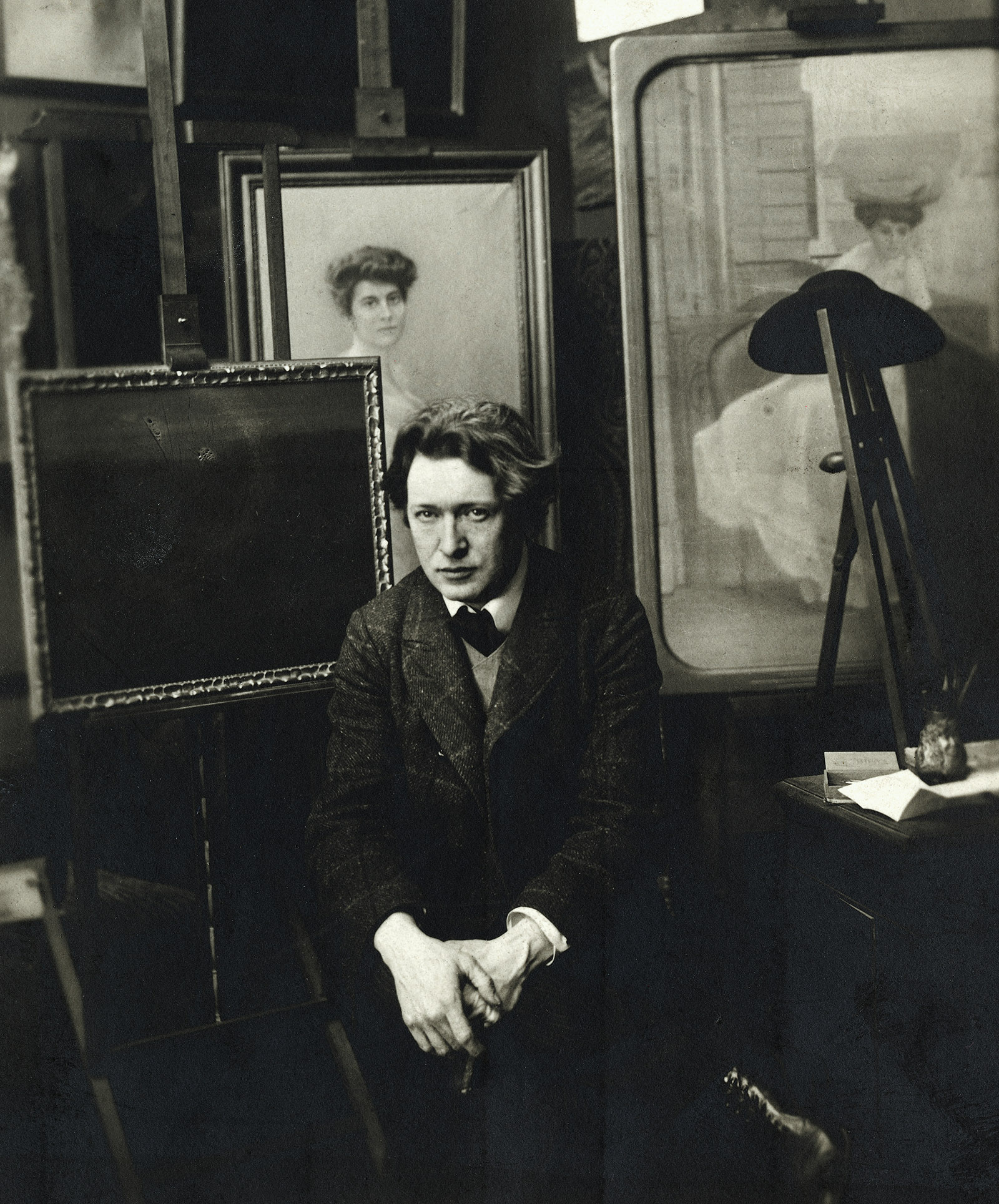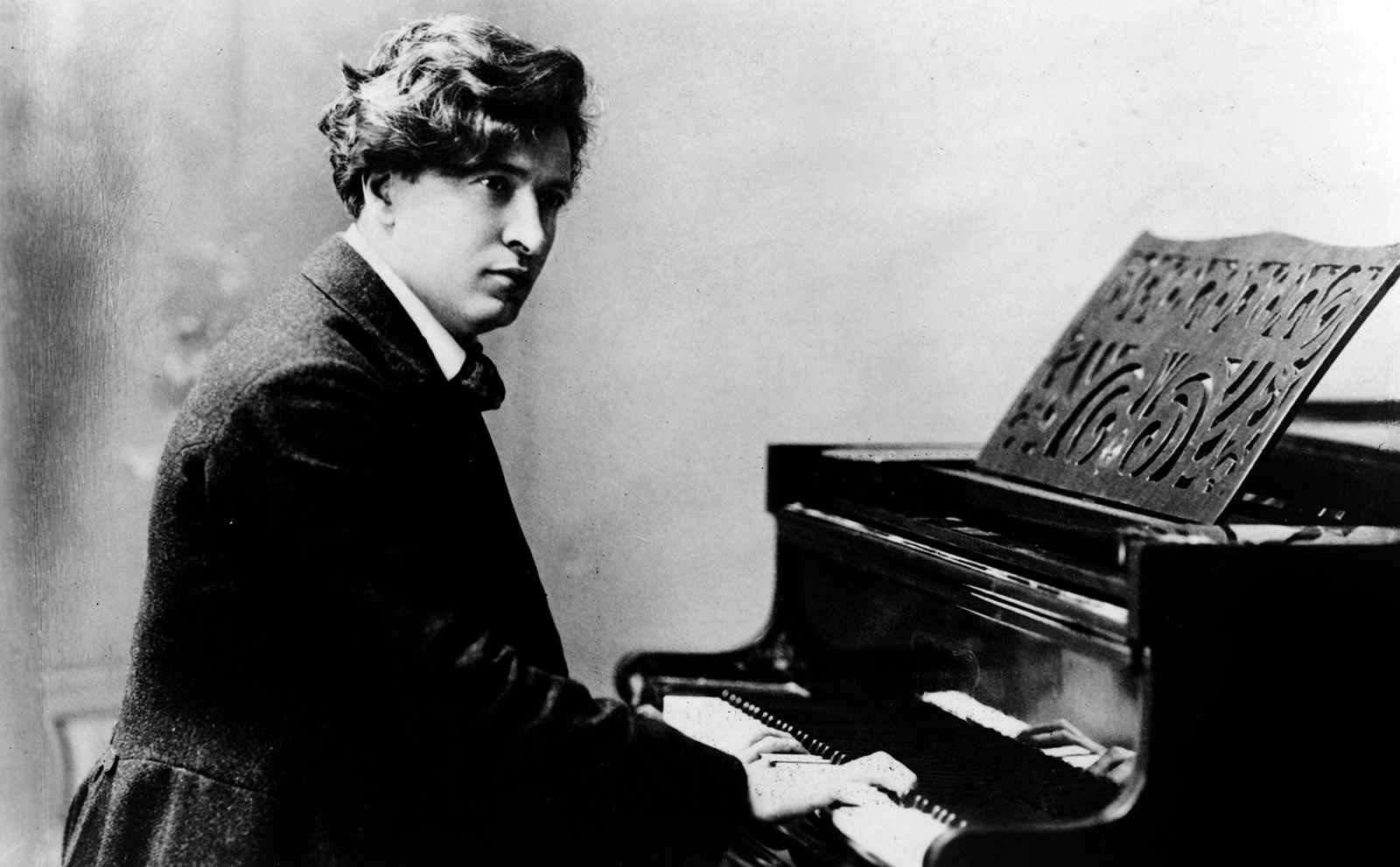Concertgoers who braved the elements on two chilly evenings in Cleveland earlier this month were rewarded with an extraordinary rarity: a performance of Ferruccio Busoni’s remarkable Piano Concerto from 1904. At over seventy minutes, it may be the longest concerto ever written for any instrument. It may also be the most challenging. It demands nearly superhuman stamina and virtuosity of its soloist, who plays almost continuously throughout and whose part is fiendishly difficult.
Much else about the work is unorthodox as well. Concertos usually have three movements, and it was considered excessive when Brahms wrote one with four. Yet Busoni’s concerto is composed of five vast movements, like three majestic lakes linked by two rushing rivers. None of them fits into any of the standard forms. The opening theme has a Brahmsian tranquility of line, but harmonically it is in constant flux, instantly modulating from its home key of C major. Among the subsequent themes are a snatch of plainchant that Busoni heard in Strasbourg Cathedral and a rhythm on a single note like a military tattoo. These themes are not so much conventionally developed as transmogrified into the themes of later movements. In the finale, piano and orchestra are joined by a men’s chorus, which sings a hymn to Allah drawn from the Danish playwright Adam Oehlenschläger’s 1805 drama Aladdin.
Despite its invocation of the Islamic deity, this is in no way a work of Orientalism. To the extent that it draws on a musical vernacular, it is decidedly Italian, incorporating a Neapolitan folk song in the second movement and a military march in the fourth. The ethereality of the finale is perhaps a response to Liszt’s Faust Symphony from 1857, in which a men’s chorus also appears at the end, intoning Goethe’s paean to the eternal feminine.
While choral finales are highly unorthodox for concertos, they were not unusual—and were even somewhat in vogue—for orchestral works in other genres around the turn of the last century. For musicians, those years were an age of maximalism. The symphonies of Mahler and the oratorios of Elgar and Delius, with their many long movements, their vast instrumental forces, and their spiritual themes, were inspirations for Busoni. But he alone had the audacity to create a piano concerto on the scale of these leviathans.
In the history of music, Busoni (1866–1924) remains an ambiguous and paradoxical figure. Half-Italian and half-German, he was renowned as the foremost pianist of his day, but he valued his work as composer, conductor, and pedagogue at least as highly as his pianism. He was a devotee of classicism who was also a prophet of modernism, a high Romantic who loathed sentimentality, and a star performer who shunned the limelight. He is remembered today chiefly for the Bach–Busoni Editions, his transcriptions of Bach’s eighteenth-century keyboard works for the nineteenth-century keyboard that adapted Bach to late Romantic taste (or at least to Busoni’s own), adding phrasing, pedal, tempo, and dynamic markings, and taking considerable liberties. Yet his original works, including much solo piano music and four operas, also command a small but ardent following among musicians and the public.
Though Busoni was far from religious, he aspired to attain a cosmic unity through music, which he mystically regarded as “a part of the vibrating universe.” In a 1910 letter to his wife, Gerda, sent from Ohio while Busoni was on tour, he wrote:
Come, follow me into the realm of music. Here is the iron fence which separates the earthly from the eternal…
Listen, every star has its rhythm, and every world its measure. And on each of the stars and each of the worlds, the heart of every separate living being is beating in its own individual way. And all the beats agree and are separate and yet are a whole…
Now you realize how planets and hearts are one, that nowhere can there be an end or an obstacle; that infinity lives completely and indivisibly in the spirit of all beings; that each being is both illimitably great and illimitably small; the greatest expansion is like to a point; and, that light, sound, movement and power are identical, and each separate and all united, they are life.
The supernatural realm to which Busoni gained access through music had its dark side. In his last opera, Doktor Faust, it was transformed into the world of the occult. Yet at other times the ecstasy of Busoni’s vision shone brightly, as in the idyllic ending of the concerto’s third movement, ornamented by piano filigree and muffled drumbeats.
A glimpse of Busoni’s inspiration for the concerto appears in an earlier letter to Gerda, in the form of a pen-and-ink sketch that was later redrawn by the artist Heinrich Vogeler for the title page of the published work:
Advertisement
It is the idea of my Piano Concerto in one picture and it is represented by architecture, landscape, and symbolism. The three buildings are the first, third and fifth movements. In between come the two “lively” ones; Scherzo and Tarantelle; the first represented by a miraculous flower and bird, freaks of nature; the second by Vesuvius and cypress trees. The sun rises over the entrance; a seal is fastened to the door of the end building. The winged being quite at the end is taken from Oehlenschläger’s chorus and represents mysticism in nature…
Busoni’s evocation of “mysticism in nature,” his search for oneness with the universe, would seem to indicate the comprehensive, all-embracing character of his concerto. At the same time, it may help explain its curious reticence—its tendency to submerge the soloist in the orchestral texture, uniting the piano with the ensemble in magical effects of color rather than asserting its independence.
The soloist in Busoni’s concerto is oddly self-effacing. The piano part is supremely difficult, but it seldom carries the melody. More often, a theme is played by a chorale of woodwinds or strings, while the piano weaves a gossamer web of ornament around it. As Busoni’s biographer, Edward J. Dent, put it, “Busoni sits at the piano, listens, comments, decorates, and dreams.”
In the first movement, what promises to be a flashy cadenza for the soloist melts into a delicate obbligato, accompanying the oboe and flute; in the finale, the soloist is likewise subordinated to the chorus. Throughout, much of his nimble passagework blends into the background. The soloist is not the protagonist of the piece; he is more like a Greek chorus, impelling and remarking on the action.
In a program note for the first performance, Busoni deplored the transformation of the concerto in the Classical era, when it became a vehicle for technical skill:
With the rise of virtuosity the word became restricted to the meaning which it still commonly has—a bravura piece for a single instrument, for the greater glory of which the orchestra, the most perfect and powerful musical medium, is subordinated.
For the sake of respectability these morceaux d’occasion were given the outward shape of a symphony; its first movement put on the mask of a certain dignity, but in the following movements the mask was gradually dropped, until the finale brazenly displayed the grimace of an acrobat.
By contrast, Busoni declared, “the title ‘concerto’ is used here in its original sense, signifying a co-operation of different means of producing sound.” He seems to have had in mind a Baroque concerto, such as Bach’s Brandenburgs, with passages alternating in ritornello style between larger and smaller groupings, and with keyboard obbligato accompanying other solo instruments. Yet the paints Busoni applies to this Baroque canvas are drawn from a vastly expanded palette of orchestral sonority and chromatic harmony, and, of course, the work is on a far larger scale than Baroque concertos. Although its tonal vocabulary never goes beyond that of late Romanticism, the concerto prefigures Stravinsky in its coloristic effects and Bartók in its percussive outbursts. Like Busoni himself, it is Janus-faced.

Busoni, undated
At Severance Hall in Cleveland, the concerto was performed by Garrick Ohlsson and the Cleveland Orchestra conducted by Alan Gilbert. Ohlsson was reprising his performance of the same work with the same orchestra in the same hall, thirty years earlier. (He recorded the concerto for Telarc at that time.) Since then, it appears that only three other pianists—Piers Lane, Marc-André Hamelin, and Kirill Gerstein—have performed it with professional American orchestras. (Gerstein’s 2017 performance with the Boston Symphony has also been recorded and was just released by Myrios Classics on February 22.)
At seventy, Ohlsson possesses technique, endurance, and vigor that a pianist half his age would envy. His performance was a marvel of virtuosity, and he played with Olympian serenity and equanimity, dispatching the most strenuous passages with apparent ease. Even his tempestuous, thunderous episodes were less wild than inexorable. Occasionally, one longed for a little youthful impetuosity (as provided, for example, by the Australian pianist Noel Mewton-Wood, who recorded the concerto at age twenty-five in 1948). But Ohlsson’s fidelity and restraint offered their own satisfactions, and he played with dazzling fleetness in the presto passages. His opening movement was stately, “sweet and solemn,” as Busoni directs; his tarantella began calmly but gradually built up to three dizzying climaxes, delivered at breakneck speed.
Alan Gilbert drew a spirited performance from the orchestra, communicating the grandeur of Busoni’s vision with sweep and drive. The two huge scherzos that flank the towering central movement were exuberant, evoking an Italian carnival. Both orchestra and chorus were impeccably clear, though sometimes a touch too forthright: Busoni asked that the chorus be invisible, but in Cleveland its voices dominated the finale, conveying more verve than mystery. Neither conductor nor soloist took many liberties. There was little rubato, even where Busoni’s directions seemed to invite it.
Advertisement
Ohlsson’s first prize at the Busoni Competition in 1966 helped launch his career, and he often includes Busoni’s works and transcriptions in his recital programs. Listening to Ohlsson’s playing, one is struck by its resemblance to the style attributed to Busoni himself, one of superlative technique tempered by emotional restraint and attention to large-scale structure. Busoni skillfully employed the pedal to create a magical variety of color effects, so that even the most note-heavy passage became, according to the musicologist Gisella Selden-Goth, “a disembodied floating sound-mixture, gliding and whirling past in iridescent shades.” His rapid figures were soft, steady, and slightly detached; his chordal passages had a velvety sonorousness. In the words of Dent, “The glittering scales and arpeggios became… a dimly suggested background, while the themes in massive chords or singing melodies stood out clear because Busoni had acquired so perfect a control of touch that his tone seemed to become more and more beautiful as it grew louder.” As Alfred Brendel writes, “Busoni’s piano playing signifies the victory of reflection over bravura.” All of this could be said of Ohlsson’s playing, too.
One senses that the impetus for these performances may have come less from audiences, to whom Busoni is hardly a household name, than from the musicians themselves, to whom a monumental work like the Busoni concerto presents an exhilarating challenge. Yet the Cleveland audience was raptly attentive and cheered the musicians to the echo. At a moment when adventurous twentieth-century repertoire seems to be vanishing from symphony programs, the Cleveland Orchestra is to be applauded for mounting this singular work.
The Cleveland Orchestra, conducted by Alan Gilbert with Garrick Ohlsson as soloist, gave two performances of Ferruccio Busoni’s Piano Concerto on February 7 and 9 at Severance Hall, Cleveland, Ohio.


